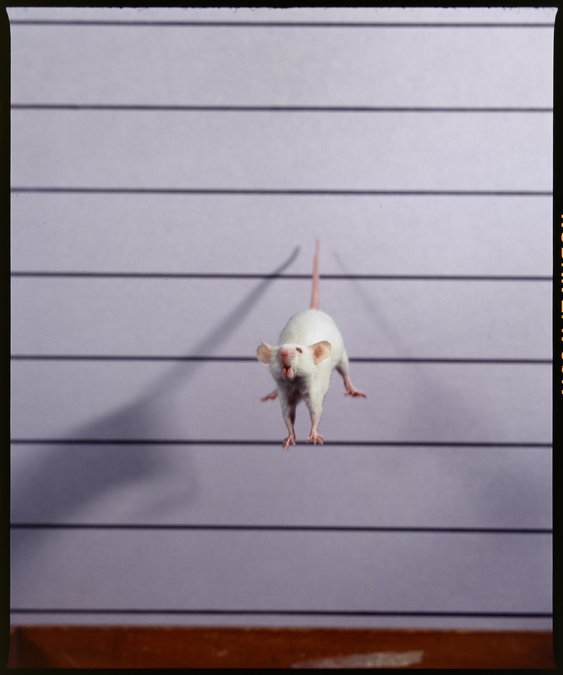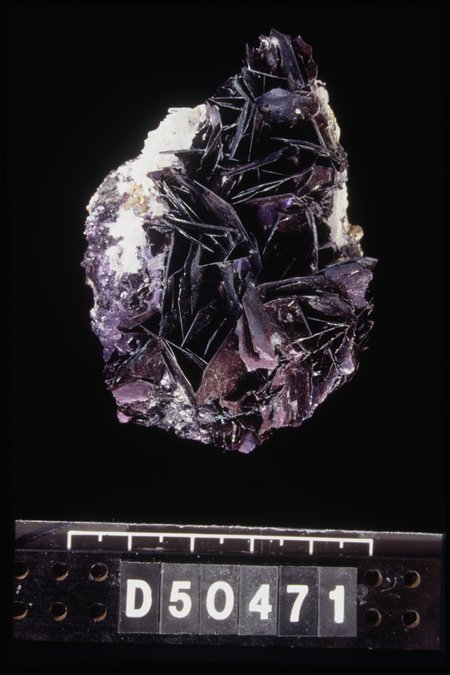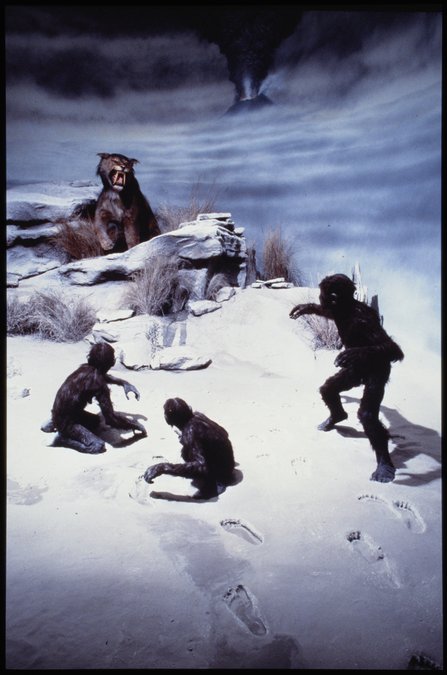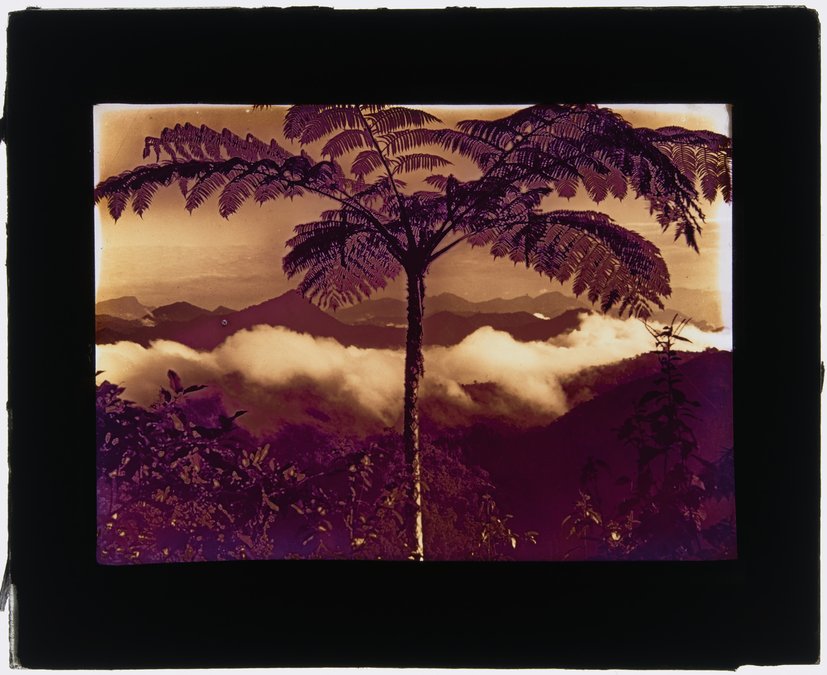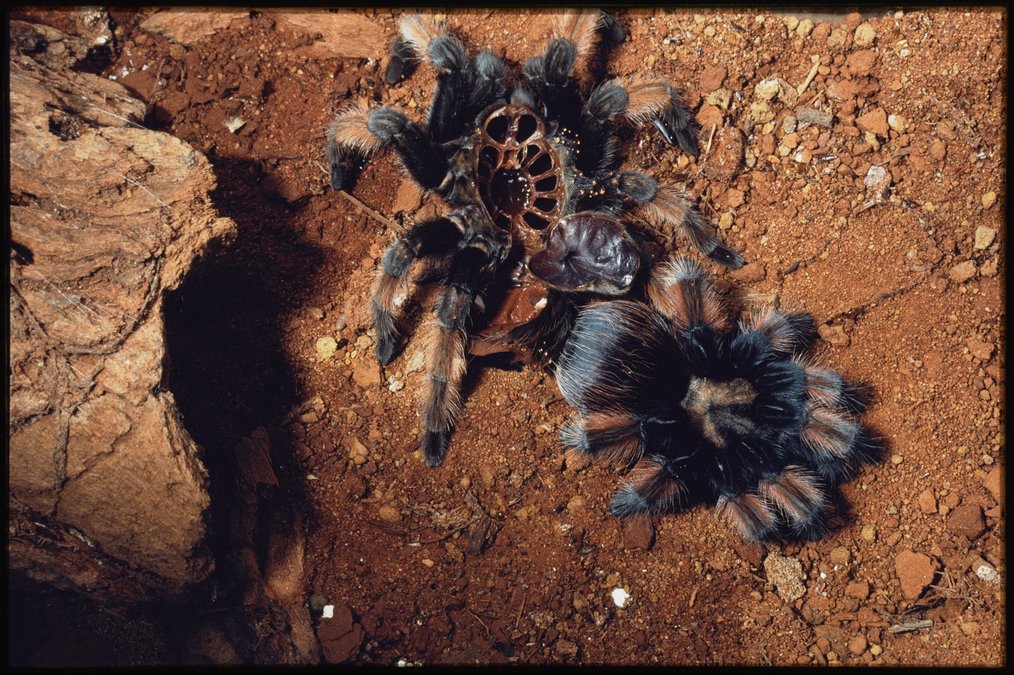Ric Bolzan: Favourite photographs from the archive
Former head of the Australian Museum's photography department, Ric Bolzan nominates his top five favourite Australian Museum images and tells us why.

Digitisation specialist Annie Breslin chatted with former Australian Museum photographer and Photographic Department manager, Ric Bolzan to discuss his favourite and most memorable images from his time at the Museum.
Interview with Ric Bolzan

© Australian Museum
You were a photographer at the Australian Museum on which dates?
RB. In 1983 I was initially contracted by the Australian Museum to photograph items from the Ethnographic Collections. From 1988 to 1996 I was head of the Photography Department which involved managing photographic and administrative staff to create images for publicity, public programs, scientific research, and collection documentation in addition to managing the historic and contemporary photographic collections – plus taking photographs. I believe my major contribution was not as a photographer myself but enabling excellent photographers such as Carl Bento and others to produce some truly amazing images.
Tell us how you became interested in photography?
RB. I was originally interested in printmaking but became interested in photography while studying for a Visual Arts degree. After graduating I began teaching photography at Colleges of Advanced Education (CAEs) which is where I became more heavily involved in photography, photographic history, and techniques.
What is interesting about working as a photographer in a museum?
RB. There are two major interesting aspects of working as a photographer in a museum.
Firstly, the variety of work that is required, photographing anything from live specimens, material from the collections (from the very small to the very large), Museum events, portraits, gallery documentation and field work.
Secondly is working with dedicated scientists undertaking research and with exhibition construction preparators developing public exhibitions.
There was also the challenge of managing a collection of thousands of images in multiple formats extending over 100 years from the past to the present. The images I have selected, (with one exception, which was produced as a glass lantern slide) were all produced on film which involved a higher level of complexity than with digital photography – and uncertainty, as it was often hours or days or before we saw the resulting photograph. At that time, if we had to produce black & white and colour photographs, we had to use two separate cameras.
Below are Ric Bolzan's top five photographic images from the Australian Museum archives.
How a mouse might fall

This photo was made to illustrate an article inquiring whether mice would right themselves in mid air when falling so that they could land safely.
I worked with photographer Carl Bento to build a set where a mouse could be pushed off a ladder and trigger an electronic flash while passing through an infra-red beam before landing on a pillow. There was a lot of trial and error with a similarly weighted bean bag to determine the exact point where the mouse would be when the flash unit fired as it fell quite quickly. We also produced a ruled background to provide a visual scale.
The photo was taken in total darkness with the camera shutter held open to avoid synchronisation problems between the beam, flash and camera shutter.
The shoot was more successful than we expected and only a few takes were required. The mouse was quite intelligent, and after the first two attempts, it knew what was going to happen and required more encouragement to jump. Of course, no mice were injured during this process.
Technical information: Camera: Nikon, Film: Kodak Ektachrome 35mm roll film, 100 ISO, Lighting: multiple electronic flash triggered by infra-red sensor.
Image: A falling mouse in mid air. From a slide film transparency. AMS701/17149. Photographer: Carl Bento and Ric Bolzan ©Australian Museum
Capturing the facets

One of my interesting projects was to document the Albert Chapman mineral collection (https://australian.museum/learn/collections/natural-science/mineralogy/albert-chapman-the-collection/) prior to its installation for exhibition. There were multiple challenges in this project, firstly because there was a huge variation in size, colour, contrast, reflectivity, and crystalline structure of the minerals. This necessitated different camera magnifications, lighting contrast and we used multiple flash light sources aimed from different directions to highlight the different facets of each mineral. Secondly, a black background was required as the mineral was to appear as if suspended in space. Because we were working with film, and digital enhancement was not possible, (i.e., we couldn’t digitally conceal mounts after the image had been captured) the mineral had to be supported from below on long supports of differing sizes depending on the size and weight of the mineral, from less than 5cm wide and up to 30 cm wide. It was an engineering feat just to have the minerals appear to be floating in space.
An added complexity was that the mineral had to be securely supported and not subject to potential risk of damage. We had to work with white cotton gloves in case any natural skin oils reacted with the mineral, and we had a “handler” present who transferred the specimen from its storage container to the mount in the studio setup. We would take multiple photographs with different exposures and one photograph containing a metric scale to indicate the size of the mineral. In this case the use of highly stable colour film was of critical importance.
Technical information: Camera: Nikon, Film: Kodak Kodachrome 35mm roll film, 64 ISO, Lighting: multiple electronic flash sources.
Image: Multifaceted mineral specimen (Covellite (copper sulfide)) from Butte, Montana USA.). From a slide film transparency. AMS701/59689. Photographer: Ric Bolzan ©Australian Museum
Tracks Through Time diorama

Life size dioramas in museums, replicas of a scene either full-sized or miniature, were a popular way of bringing scenes of the past to life but have become less fashionable, leading to many being removed, dismantled, or destroyed.
This photograph shows a life-size size diorama of early humanoids (laetoli) in East Africa being menaced by a Sabre-tooth tiger in the Tracks Through Time exhibition that opened in 1988.
The photo was produced to illustrate an Australian Museum Guide featuring some of the “permanent” exhibitions. A fact of museum life is that “permanent” is a concept rather than a reality, as everything changes over time – including exhibitions.
Technical information: Camera: Mamiya 6x7, Film: Kodak Ektachrome 120 roll film, 100 ISO, Lighting: ambient.
Image: Tracks Through Time exhibition diorama. From a slide film transparency. AMS701/53023.Photographer: Ric Bolzan ©Australian Museum
Frank Hurley’s hand coloured lantern slide

Captain Frank Hurley was a professional photographer operating in the early 1900s who would often accompany scientists on expeditions and then hold public presentations of his travels to raise funds for his next adventure.
The Australian Museum holds a large collection of glass plate negatives and “positives” (in the form of lantern slides) produced by Hurley.
“Lantern slides” were 2.25in (5.7cm) square glass positive images produced from glass plate negatives which could be placed in a projector to be shown on a large screen to audiences.
To enhance the experience, Hurley would have some of his lantern slides hand-coloured with dye to make them more dramatic – this was in the period before colour photography had been invented.
I chose this picture as it is a fine example of the way Hurley would add colour to demonstrate the “exotic” atmosphere of the Papua New Guinea landscape for his lectures.
Technical information: Camera: Glass plate 5x7in, B&W Glass plate positive, hand coloured, Lighting of original glass plate negative: daylight.
Image: Dating from 1926 this hand coloured lantern slide was made by adventurer, photographer Frank Hurley from one of his black and white photos of a scene in the Owen Stanley Ranges in Papua New Guinea. AMS164/VV03254. Photographer: Frank Hurley © Reproduction rights Australian Museum
Mexican Red Knee Tarantula moulting

This rather large, but relatively harmless, Mexican Red Knee Tarantula (Brachypelma hamorii) was acquired by the Museum after it was seized by customs as it was being brought into the country illegally. The adult females having a total body length over 50 mm and are a popular choice for enthusiasts.
Like most tarantulas, it has a long lifespan and moults several times as it grows larger.
I was called to the arachnology section when the female spider, nicknamed Juanita, showed signs of moulting. The process extended over a number of hours as the spider slowly cracked its carapace and pushed itself upward and outwards until it finally freed itself leaving a life-size, hollow “sculpture” of itself behind.
Photographs like these were usually left with the scientific departments for reference, as was the case with most photographs of specimens and ethnographic material, and we often never saw them again. It is fortunate that this image is still in the Museum’s photographic archive.
Technical information: Camera: Nikon, Film: Kodak Kodachrome 35mm roll film, 64 ISO, Lighting: electronic flash.
Image: Red Knee Tarantula (Brachypelma hamorii) moulting. AMS701/35966 Photographer: Ric Bolzan © Australian Museum
Explore Ric Bolzan's favourite images
See more photographic collections
Dive into the Australian Museum photographic collections and learn about the Museum's rich history through rarely seen photos.
Discover more
